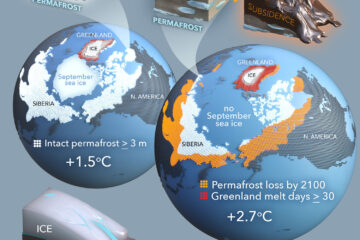Long-term straw decomposition in agro-ecosystems described by a unified three-exponentiation equation with thermal time
Understanding drivers of straw decomposition is essential for adopting appropriate management practice to improve soil fertility and promote carbon (C) sequestration in agricultural systems. However, predicting straw decomposition and characteristics is difficult because of the interactions between many factors related to straw properties, soil properties, and climate, especially under future climate change conditions. This study investigated the driving factors of straw decomposition of six types of crop straw including wheat, maize, rice, soybean, rape, and other straw by synthesizing 1642 paired data from 98 published papers at spatial and temporal scales across China. All the data derived from the field experiments using little bags over twelve years. Overall, despite large differences in climatic and soil properties, the remaining straw carbon (C, %) could be accurately represented by a three-exponent equation with thermal time (accumulative temperature). The lignin/nitrogen and lignin/phosphorus ratios of straw can be used to define the size of labile, intermediate, and recalcitrant C pool. The remaining C for an individual type of straw in the mild-temperature zone was higher than that in the warm-temperature and subtropical zone within one calendar year. The remaining straw C after one thermal year was 40.28%, 37.97%, 37.77%, 34.71%, 30.87%, and 27.99% for rice, soybean, rape, wheat, maize, and other straw, respectively. Soil available nitrogen and phosphorus influenced the remaining straw C at different decomposition stages. For one calendar year, the total amount of remaining straw C was estimated to be 29.41 Tg and future temperature increase of 2 °C could reduce the remaining straw C by 1.78 Tg. These findings confirmed the long-term straw decomposition could be mainly driven by temperature and straw quality, and quantitatively predicted by thermal time with the three-exponent equation for a wide array of straw types at spatial and temporal scales in agro-ecosystems of China.


